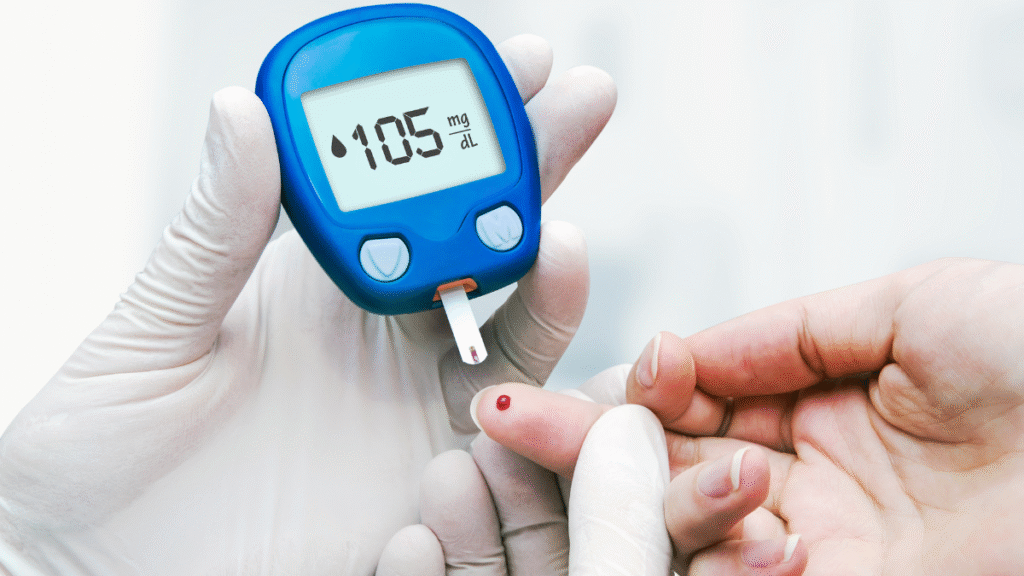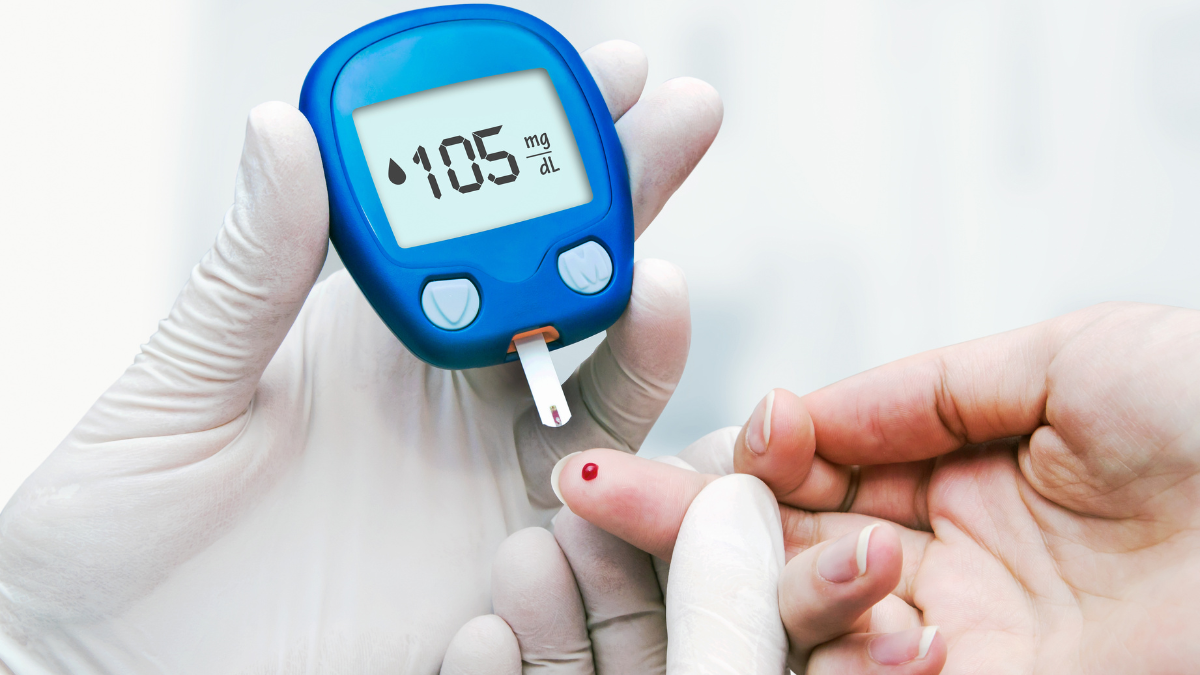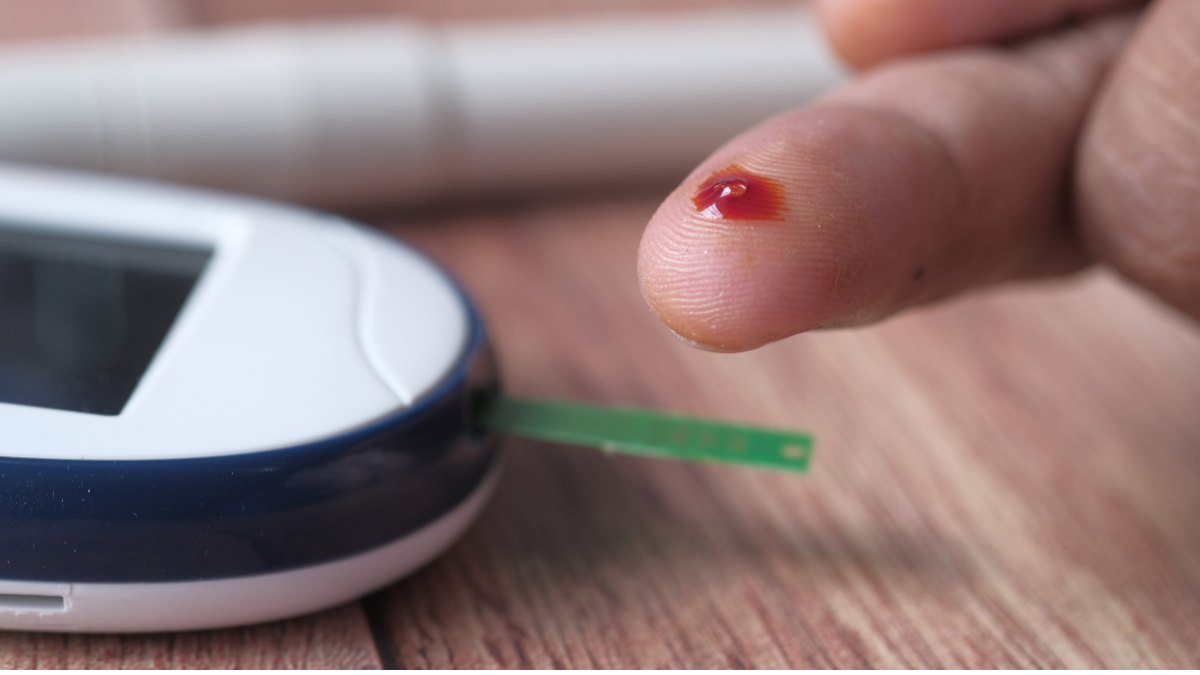Menopause is a natural life stage that brings many physical and emotional changes. One of the less-discussed but clinically important effects is how the hormonal shifts around menopause — especially falling estrogen levels — can disrupt blood sugar control and increase the risk of metabolic and cardiovascular problems. This blog explains the physiology behind those changes, the health consequences, common symptoms, and practical, evidence-based strategies to monitor and manage blood sugar during perimenopause and after menopause.
Why menopause affects blood sugar: the biology in plain language
Estrogen is not only a reproductive hormone — it also plays key roles in how the body handles glucose and fat. Estrogen improves insulin sensitivity, affects where fat is stored (favoring peripheral over central fat), and influences appetite, inflammation, and energy use. When ovarian estrogen production declines during perimenopause and menopause, those beneficial effects are reduced. As a result, many women experience greater insulin resistance (the body’s reduced response to insulin), higher fasting blood glucose, and an increased tendency to accumulate visceral (abdominal) fat — a metabolic pattern linked to worse blood-sugar control.
Typical changes in blood sugar around menopause
- Greater insulin resistance: Multiple studies show insulin resistance tends to rise during and after the menopausal transition, even after accounting for age. Increased insulin resistance makes the pancreas work harder and can lead to higher fasting and post-meal glucose levels.
- Higher prevalence of metabolic syndrome: Menopause is associated with higher rates of metabolic syndrome components — central obesity, raised triglycerides, higher fasting glucose, and higher blood pressure — which together raise the risk for type 2 diabetes and cardiovascular disease.
- Weight distribution shifts: Many women notice weight gain concentrated in the belly. This visceral fat is metabolically active and worsens insulin resistance and inflammation.
These changes are not universal — lifestyle, genetics, pre-existing metabolic health, and the timing of menopause (earlier menopause is associated with higher metabolic risk) all shape individual outcomes.
Symptoms and how blood-sugar changes may present
Changes in glucose regulation during menopause may be subtle or obvious. Symptoms can overlap with classic menopausal complaints and include:
- Fatigue and low energy
- Increased hunger, sugar cravings, or changes in appetite
- Weight gain (especially around the abdomen)
- Frequent urination or nocturia (if hyperglycemia develops)
- Mood swings or brain fog (can be worsened by blood-sugar swings)
Because symptoms overlap, it’s important not to assume all fatigue or mood changes are “just menopause” — screening tests are useful when symptoms or risk factors exist.
Health risks linked to menopause-related glucose changes
- Type 2 diabetes: The shift toward insulin resistance and central adiposity increases the risk of developing type 2 diabetes over time. Early menopause or premature ovarian insufficiency appears to magnify that risk.
- Cardiovascular disease (CVD): Menopause coincides with worsening lipid profiles, blood pressure, and glycemic markers in many women. These changes contribute to higher CVD risk in postmenopausal women.
- Metabolic syndrome: As noted above, the clustering of obesity, dyslipidemia, hypertension, and glucose intolerance becomes more common after menopause and accelerates long-term cardiometabolic risk.
Diagnostics and monitoring — what to check and how often
If you’re peri- or postmenopausal, consider sharing these concerns with your clinician. Recommended checks (tailored to individual risk) include:
- Fasting plasma glucose and/or HbA1c: Baseline tests to screen for prediabetes or diabetes.
- Lipid panel and blood pressure: Because dyslipidemia and hypertension often occur in tandem.
- Waist circumference and BMI: Simple measures that track central adiposity over time.
- If indicated — oral glucose tolerance test (OGTT) or insulin measures: For more detailed evaluation of glucose handling or insulin resistance.
Frequency: annual screening is reasonable for most women over 45, more often if risk factors (overweight, family history, prior gestational diabetes, hypertension) are present.
Management: lifestyle first (and what that looks like)
Lifestyle interventions are the cornerstone for preventing and managing glucose problems during and after menopause. The good news: many of the same habits that ease menopausal symptoms also improve glucose control.
1. Diet that stabilizes blood sugar
- Prioritize whole foods: vegetables, whole grains, legumes, lean proteins, and healthy fats.
- Focus on low–glycemic-load carbohydrates, fiber-rich foods, and balanced meals to reduce post-meal glucose spikes.
- Avoid frequent high-sugar snacks and sugar-sweetened beverages. Small, sustainable changes (e.g., replacing refined grains with whole grains, adding a protein or healthy fat to meals) produce measurable benefits.
2. Move more — combine aerobic + resistance training
- Aim for at least 150 minutes/week of moderate-intensity aerobic activity plus 2–3 resistance sessions weekly. Resistance training is especially important because it builds/maintains muscle mass — a major glucose “sink” — and helps reduce insulin resistance. Regular physical activity improves both glycemic control and menopausal symptoms (sleep, mood, weight).
3. Sleep and stress management
- Poor sleep and chronic stress worsen insulin resistance and increase cravings for high-carbohydrate foods. Prioritize sleep hygiene, mindfulness, or other stress-reduction tools.
4. Weight management with attention to central fat
- Modest weight loss (5–10% of body weight) often yields meaningful improvements in insulin sensitivity and metabolic markers. Even when weight loss is slow, reductions in waist circumference and increases in strength are beneficial.
Medical options: when lifestyle isn’t enough
If screening shows prediabetes or diabetes, or lifestyle interventions don’t restore control, medical therapy may be needed. Options include:
- Glucose-lowering medications (chosen based on the type of dysglycemia, comorbidities, and patient preference) for women who meet criteria for pharmacologic therapy.
- Statins, antihypertensives, and treatments for dyslipidemia when indicated, because the combination of dysglycemia and dyslipidemia increases cardiovascular risk.
- Referral to an endocrinologist or diabetes educator for complex cases or medication management.
Hormone replacement therapy (HRT): helpful, but not a simple fix
Research on HRT and glucose metabolism shows mixed but increasingly positive signals. Recent meta-analyses and randomized trials indicate estrogen (with or without progestogen) can reduce insulin resistance and lower the risk of prediabetes in some women; however, older trials and some studies have reported neutral or mixed effects, and HRT is not suitable for everyone. Decisions about HRT must consider menopausal symptoms, personal risk factors (breast cancer history, thromboembolic risk, cardiovascular history), type and route of hormones, and timing relative to menopause onset. In short: HRT may improve glycemic measures for some women, but it is not a universal prescription for diabetes prevention and must be individualized with a clinician.
Practical plan women can follow (checklist)
- Get baseline screening: fasting glucose and HbA1c, lipid panel, blood pressure, waist circumference.
- Adopt stepwise lifestyle changes: balanced plate, regular exercise, prioritize sleep, reduce alcohol and processed foods.
- Track progress: repeat HbA1c or fasting glucose in 6–12 months (sooner if abnormal).
- Discuss HRT candidly with your gynecologist/endocrinologist if you have bothersome menopausal symptoms and metabolic concerns — weigh benefits and risks.
- Treat risk factors aggressively: manage hypertension, dyslipidemia, and smoking cessation as needed to reduce cardiovascular risk.
- Seek specialist input if you have prediabetes, new diabetes, or complex metabolic issues.
When to see a clinician sooner
Make an appointment if you have:
- Symptoms of high blood sugar (excessive thirst, frequent urination, unexplained weight loss).
- A history of gestational diabetes, family history of type 2 diabetes, or other risk factors.
- Rapid weight gain focused around the belly or worsening blood pressure/lipids despite lifestyle efforts.
Takeaway: vigilance + actions = better outcomes
Menopause is a transition that often shifts metabolic balance toward greater insulin resistance and cardiometabolic risk. The interplay of falling estrogen, increasing visceral fat, and lifestyle factors raises the chance of prediabetes, type 2 diabetes, and cardiovascular disease for many women. The good news is that this trajectory is modifiable: routine screening, lifestyle interventions (diet, exercise, sleep), early treatment of risk factors, and informed discussions about HRT can all blunt the metabolic impact of menopause and preserve long-term health. Partnering with your healthcare team to create a personalized plan is the best path forward.





